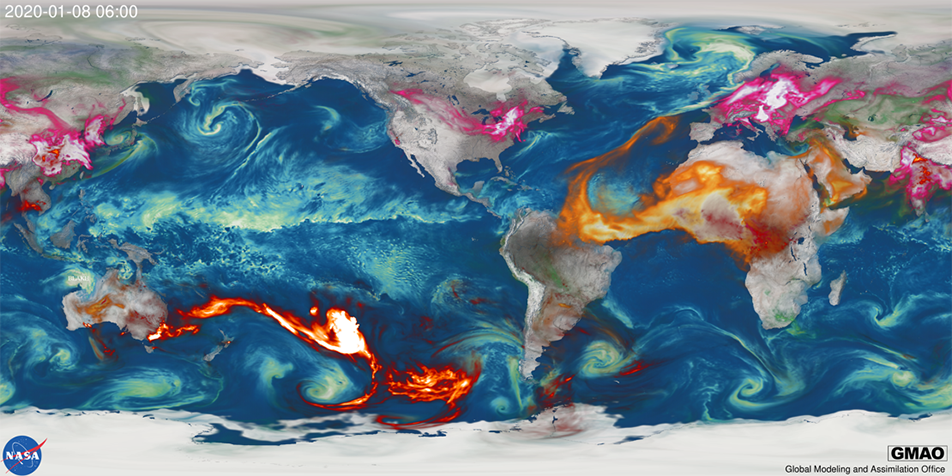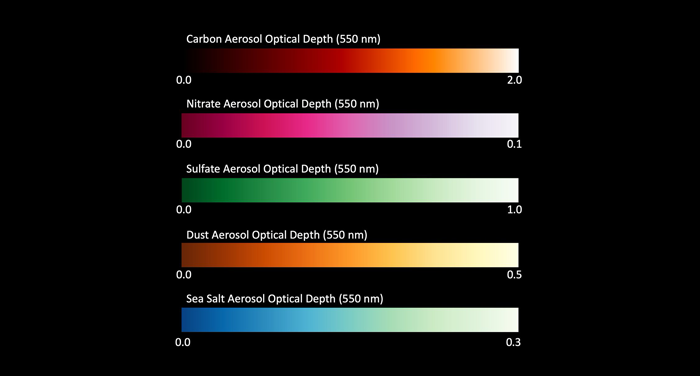Global Transport of Smoke from Australian Bushfires
Global weather is highly dynamic and interconnected, with extreme events on regional scales that are transported through the general circulation, potentially producing global impacts. These impacts extend beyond winds and precipitation, with the transport of fine particles (aerosols) that are carried across the globe by large-scale weather patterns. The GEOS-FP global data assimilation and forecast system includes multiple species of aerosols emitted into the atmosphere from the ocean/land surface accounting for their radiative impacts throughout the atmosphere. These species include sea salt emitted over oceans, dust from arid and desert regions, smoke from fires across the globe and several forms of pollution emissions from industrial activities.


Global observations of aerosol optical depth (AOD) from the NASA MODIS instruments on the Terra/Aqua satellites are assimilated to constrain aerosols in the GEOS-FP system. Active fires, also detected by the MODIS instruments, are used in a fire-emissions module QFED2 (Darmenov and da Silva, 2015), that is incorporated in GEOS-FP to constrain the carbon aerosol emissions. In this animation, the GEOS-FP aerosol distributions reveal several high impact events across the globe between August 2019 and January 2020. Weather events including Hurricane Dorian in Aug-Sep 2019 and many other tropical cyclones around the world, along with major fire events in South America and Indonesia in Aug-Sep 2019 and extreme wildfires in Australia in Dec-2019 to Jan-2020.
The local impacts of the Australian bushfires have been devastating to property and life in Australia while producing extreme air quality impacts throughout the region. As smoke from the massive fires has interacted with the global weather, the transport of smoke plumes around the global have accelerated through deep vertical transport into the upper troposphere and even the lowermost stratosphere, leading to long-range transport around the globe. The smoke from these bushfires will travel across the Southern Ocean completing a global circumnavigation back around to Australia and is particularly pronounced across the southern Pacific Ocean out to South America.
References:
Buchard, V., and Coauthors, 2015: Using the OMI aerosol index and absorption aerosol optical depth to evaluate the NASA MERRA Aerosol Reanalysis. Atmospheric Chemistry and Physics, 15 (10), 5743–5760, 10.5194/acp-15-5743-2015, URL:http://www.atmos-chem-phys.net/15/5743/2015/. Buchard, V., and Coauthors, 2016: Evaluation of the surface PM2.5 in Version 1 of the NASA MERRA Aerosol Reanalysis over the United States. Atmospheric Environment, 125, 100– 111, 10.1016/j.atmosenv.2015.11.004, URL: http://www.sciencedirect.com/science/article/pii/S1352231015305136.
Darmenov, Anton, and Arlindo da Silva, 2015. The Quick Fire Emissions Dataset (QFED): Documentation of versions 2.1, 2.2 and 2.4. NASA/TM–2015–104606, Vol. 38. Document(68725 kB).

